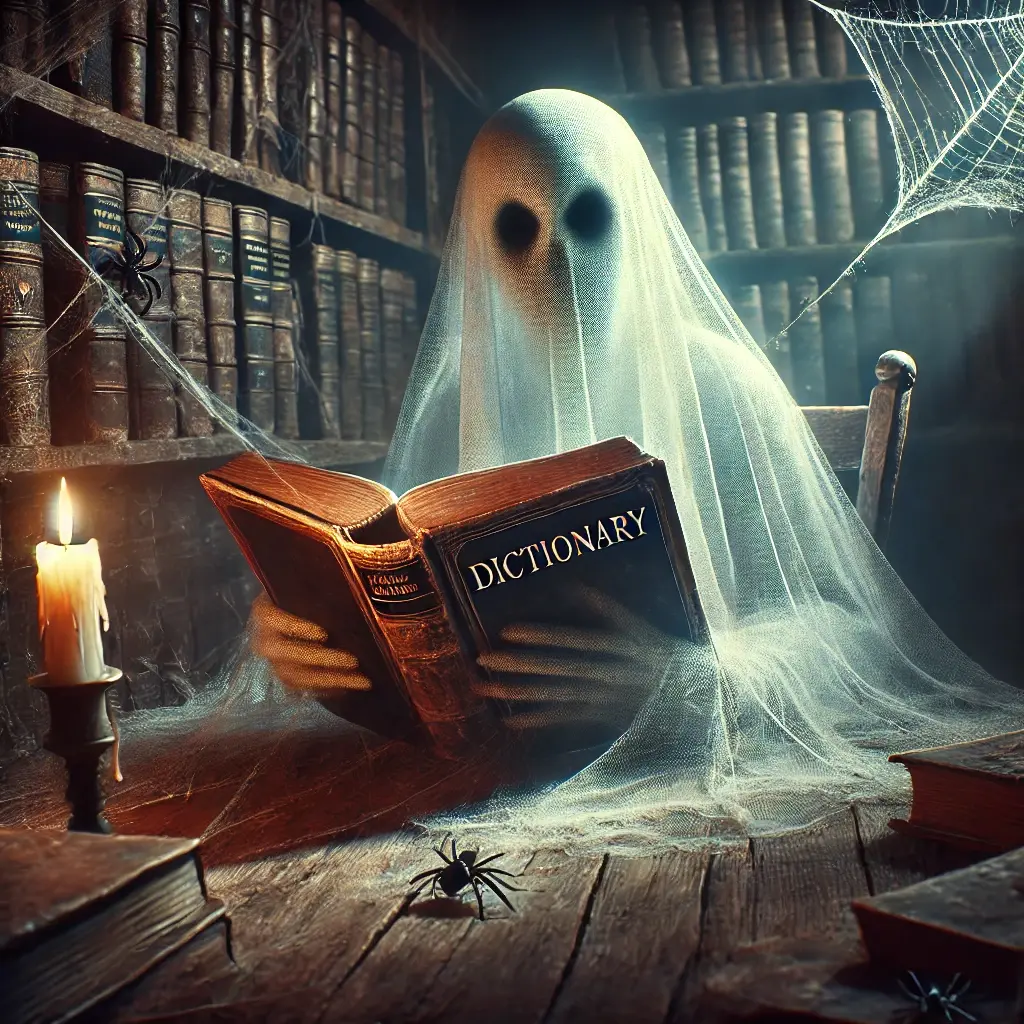
Ghost Words: Forgotten, Non-Existent, and Misspelled Words in Dictionaries
1. What Are "Ghost Words" and Why Do They Fascinate Linguists?
Ghost words are linguistic mirages—terms that never truly existed yet somehow found their way into dictionaries. They often emerge from printing errors, misread manuscripts, or simple misunderstandings. One famous case is the word phantomnation, which appeared in the 19th-century Oxford English Dictionary as an alleged synonym for "society." In reality, it stemmed from a misinterpretation of the phrase "a phantom nation" in a source text. These cases reveal how fragile our perception of language can be and how creatively gaps in knowledge are sometimes filled.
Why do such linguistic illusions persist? Often, the authority of dictionaries is to blame—when a word appears in a trusted publication, readers assume it must be legitimate. As a result, mistakes gain a second life, sometimes even inspiring writers or poets. Today, the verification process is much more rigorous, but in the pre-digital era, such "ghost words" could go unnoticed for decades.
Interestingly, some ghost words evolve into cultural phenomena. Consider the infamous typo covfefe, which quickly became the subject of internet memes and jokes—proof that even errors can achieve cult status in modern pop culture.
2. The Most Famous Linguistic Ghost: The Story of "Dord"
In 1934, the Merriam-Webster dictionary included the entry dord, defined as a synonym for "density" in physics. For five years, no one questioned its existence, until an editor discovered it was simply a typographical mistake. The original entry should have read "D or d" (an abbreviation for "density"), but the missing space turned it into a new word. This incident perfectly illustrates how minor errors can inadvertently become part of the official language.
Dord is more than a curiosity—it changed how dictionaries are edited. After this blunder, publishers introduced double-verification procedures and took greater care to separate abbreviations from full entries. Paradoxically, this ghost word helped improve lexicographical precision. Today, dord serves as both a cautionary tale for language students and a symbol of the transient nature of linguistic "truth."
In recent years, the word has regained a touch of dignity—language enthusiasts sometimes use it humorously to refer to lexicographical blunders. It even appears in online slang dictionaries, proving that even mistakes can find new life in the digital age.
3. How Do Ghost Words Influence Language Evolution?
Although ghost words begin as errors, they can influence language evolution. A classic example is the English word syllabus, which originated from a misreading of the Latin sittybas in medieval manuscripts. Today, no one questions its legitimacy—it has become an established academic term. This highlights how thin the line between error and linguistic innovation can be.
Sometimes, words long considered incorrect are eventually accepted or found to have historical roots, challenging traditional notions of linguistic "errors." Debates over new verb forms or emerging idioms reveal how language norms constantly shift. Such discoveries remind us that language is a living system that can correct its own mistakes.
In the internet era, the creation of ghost words has accelerated. Autocorrect blunders, misunderstood hashtags, or distorted memes often spawn new expressions, some of which even make their way into official sources. Should we resist this, or embrace it as a natural part of communication evolution? This remains one of the most intriguing questions in contemporary linguistics.
4. Modern Ghosts: How Digitalization Creates New Linguistic Illusions
With the rise of algorithms and AI-powered translators, a new generation of ghost words has appeared. One example is glitch words—terms generated by AI that sound plausible but have no meaning. In 2022, a GPT-3 chatbot coined the word florpes, supposedly referring to a type of flower. Hundreds of users began using it until it was revealed to be a phantom neologism.
Errors in digital dictionaries also present a problem. For example, a language-learning app might incorrectly define a word, confuse similar terms, or mistranslate an idiom, resulting in misleading or nonsensical entries. Automation can create these linguistic hybrids, which are particularly dangerous because they can spread globally within hours.
Combating digital ghost words requires new strategies. Some lexicographers propose hybrid systems where algorithms are supported by networks of volunteer linguists. Others call for a register of systemic linguistic errors to help track and correct such phenomena in real time.
5. Ghost Hunters: How Are Errors Removed from Dictionaries Today?
Removing ghost words from modern dictionaries is a complex linguistic detective task. In print editions, corrections often appear quietly in later versions. However, in digital platforms, the battle against ghost words can be dramatic. For instance, in 2019, the Oxford English Dictionary team spent three days investigating the entry kracken, which reportedly arose from a blend of kraken and racken from German sources.
Lexicographers employ various methods, including historical verification teams that use text corpora and AI to detect anomalies. Interestingly, some errors are intentionally preserved in archives as lexicographical monuments, complete with notes explaining their status and history.
The latest trend is community involvement. Platforms like Wiktionary or university-led language observatories encourage users to report suspicious entries. As a result, "ghost hunting" has become a democratic process—anyone can be a linguistic detective. This proves that even in an algorithm-dominated world, human curiosity remains the best defense against linguistic illusions.
2025-02-10, Category: Scrabble Miscellany